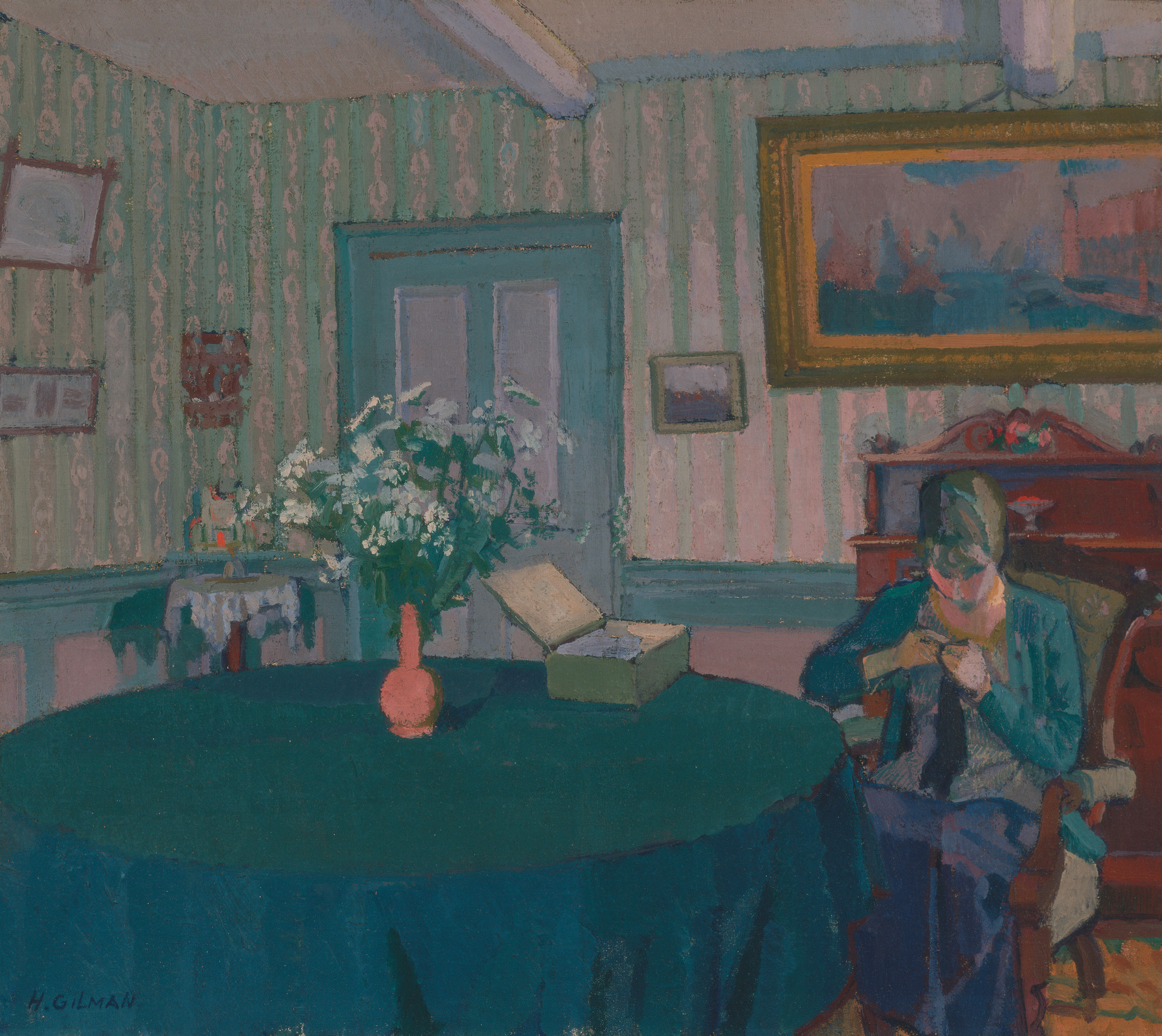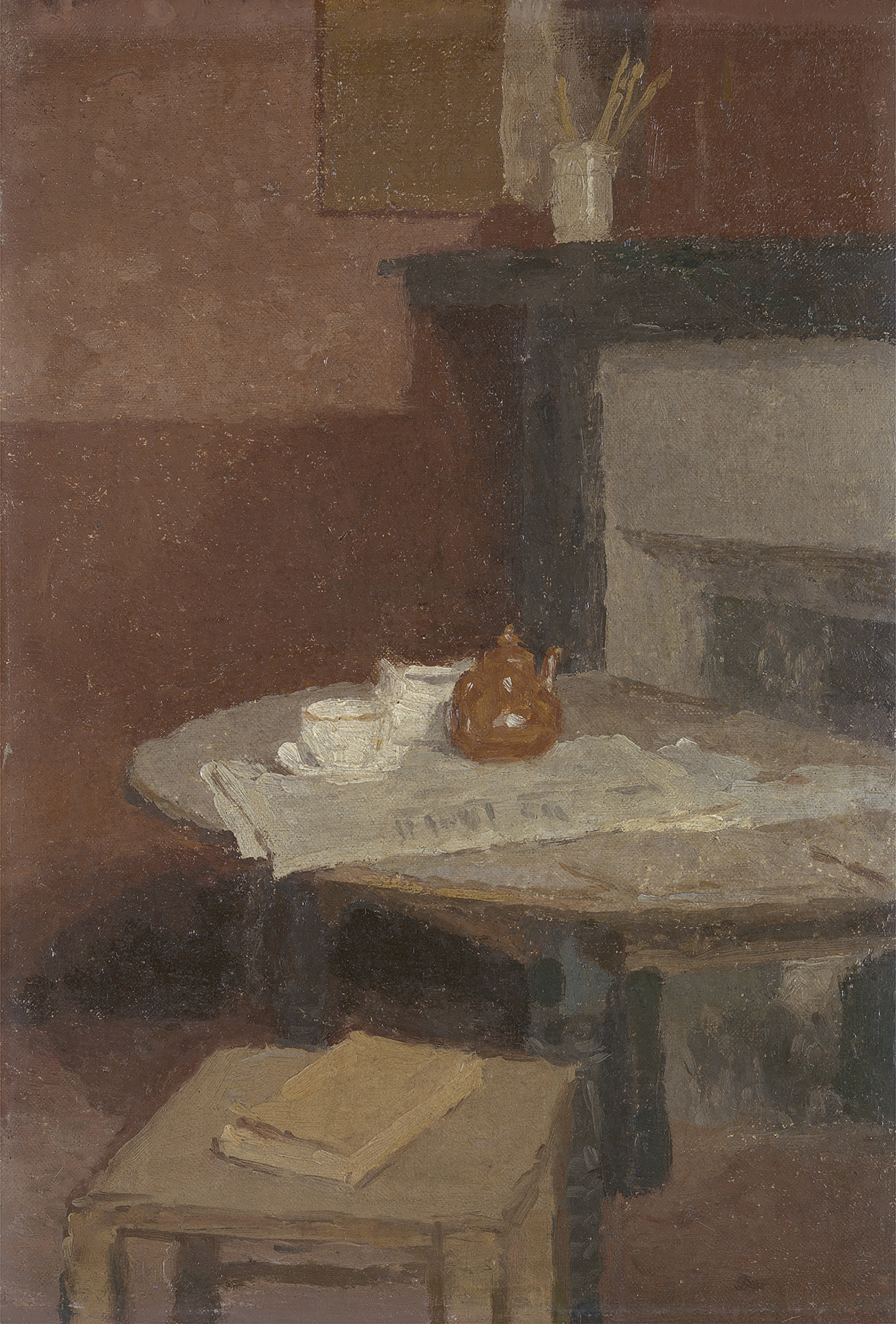For those of us fortunate enough to have somewhere safe to self-isolate, our living spaces are becoming very familiar. “The interior” has always been a popular subject in British art—and one often used, in portraits and conversation pieces, to convey the wealth and status of a patron. However, in the twentieth century, many artists turned to depictions of the interior as a way to experiment with new painting techniques and representations of space.
Harold Gilman, a member of the Camden Town Group, used the inside of his London town house as a boldly colored backdrop for a number of his paintings. His Sylvia Darning, painted in 1917, is a particularly stunning piece—featuring his wife, Sylvia Hardy (also a trained artist), in a large parlor rendered in vibrant tones of green, orange, and pink. While his composition seems otherwise traditional—a domestic scene painted with exacting perspective—Gilman’s palette choices run contrary. He was, as you can see here, a confident colorist and often worked with the newest mass-produced paints on the market.
Gilman’s lively palette could not be more different from his contemporary Gwen John. The Parisian rooms where John lodged became symbols of her quiet personality and contemplative nature, rendered in muted tones of gray and brown. She painted them over and over again, as backdrops for her three-quarter length portraits, and reduced all detail to simple geometry. Her work The Brown Tea Pot (between 1915 and 1916) is a wonderful example, framed to emphasize the angularity of the mantelpiece and the curvature of the table. It was painted four times—the versions varying only slightly—and is quietly intense, starkly simple, and beautifully rendered.
Written by Rachel Stratton, Postdoctoral Research Associate, Yale Center for British Art

